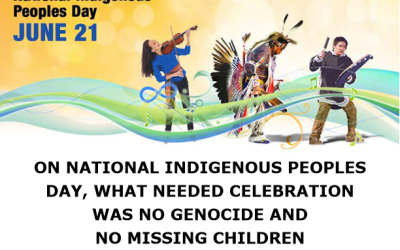An Interpretation of this Case
The Restoule case raises novel, contentious, and potentially destabilizing issues of national importance which the people of Canada deserve to have settled by the Supreme Court.
- The trial judge, upheld by a narrow majority of the Court of Appeal, accepted the unprecedented claim that an Indian treaty was and is a “reciprocal relationship between independent entities,” involving “shared spaces and resources.”
- The trial judge, upheld by a narrow majority of the Court of Appeal, accepted the unprecedented claim that the Indian bands’ surrender of the treaty lands was a “gift” to the Crown, given with the “cultural expectation of equal reciprocity.” That is, the future proceeds of the development of the land would be shared.
- The trial judge, upheld by a narrow majority of the Court of Appeal, accepted the unprecedented claim that the treaties were not one-time agreements, contrary to the parties mutual conduct over 150 years. The treaties were, according to the trial judge “future-oriented agreements situated within an ongoing relationship,” subject to constant review and renewal.
In my opinion, the trial judge has infantilized the treaty people, implying that because of their “Anishnaabe perspective” they could not understand the treaties in the way the Crown did, even though the evidence showed that the band-negotiators were intelligent and competent individuals and that the treaties were skillfully and conscientiously translated and explained to them.
For instance, the trial judge ruled that the Indigenous bands were incapable of understanding the meaning of the word “unfettered.” The majority in the Court of Appeal let this finding stand, while the minority said that this finding was wrong, being directly contradicted by the evidence of one of the Treaties bands witnesses, “Elder” Corbiere.
This, what I call a “cultural perspective dodge,” which in my opinion will be used by other Indigenous groups to attempt to resile from clearly worded treaty provisions. Restoule, unless it is appealed to the Supreme Court, creates a precedent for other treaties to be challenged on similar “Indigenous perspective” grounds.
Other treaty challengers will, no doubt, argue: “Because of our unique Indigenous cultural perspective we didn’t … understand our treaty in the way Euro-Canadian understand it. Thus, we want our treaty renewed. We want to keep our honour of the Crown payments plus we want our collective share of the value of the lands we agreed to share … with interest, retroactive to when our forefathers signed the treaty.”
This is not realistic. First nations are sophisticated players in the Canadian political and economic systems. They have top-ranked lawyers and consultants. For this reason, Canadians and their governments need a ruling from the Supreme Court of Canada to ensure these decisions are fair.
Until that happens, I will assume that the Court of Appeal decision is the final word on this matter.
The next stage of this court proceedings–The Stage Three Proceedings–is to determine how much money is owed to the bands. Adding to the inherent deviltry in all accountings is that all five judges overruled Justice Hennessey’s ruling that the bands were entitled to a “fair” share of the net Crown resource-based revenues. They agreed that the word “fair” had never appeared in the evidence at trial. It had only been used by the bands’ lawyers in their final submissions, in what the Court of Appeal perceptively noted was an attempt at “narrative priming.”
As a consequence, the Court of Appeal ruled that the word “fair” must be excised from the judgment, thus leaving the bands with a ruling that gives them an indeterminate–to be calculated–share in the net Crown resource-based revenues.
Adding to the uncertainty of what value the Court will place on the resources in the Stage Three Proceedings is that the Court of Appeal overruled Justice Hennessey’s exclusion of the costs incurred by the Crown over the past 150 to 175 years of “the infrastructure and institutions built with Crown revenues.” All five judges ruled that these costs can be included as expenses in the calculation of “net Crown resource-based revenues.”
This is, it seems to me, a fair and just ruling on this point by the Court of Appeal.
If Ontario and Canada apply this ruling to safeguard the public purse and their sovereignty, it should profoundly impact the Stage Three accounting in favour of Canadian taxpayers represented by the federal and provincial governments.
Consider that despite the Treaties payments to the Superior and Huron bands being paid only $4 annually per person over the past 150 years, over this same period the Crowns have used resource-based revenues to build “institutions and infrastructure” which properly defined includes all that makes up the modern, comfortable and caring civilization that both Indigenous and non-Indigenous Canadians enjoy. All of this has benefitted the Superior and Huron bands.
As well, over the past 150-year period, and particularly within the past 60 years or so, the governments have honourably dealt with the inadequacy of the $4 annual individual payment, by voluntarily providing them with numerous necessary and life-enhancing payments and significant other tangible and intangible benefits, none of which are required by the Superior and Huron treaties.
For example, the Ontario government provide to the beneficiaries of the treaties free medical and dental care, massive grants for reserve operations, program and infrastructure support paying for band offices, medical facilities, hockey rinks, police stations, and community centres, funding for the construction and operation of reserve schools, grants to pay students’ tuition, room, and board for post-secondary education, special business start-up loans and loan guarantees, housing construction grants, programs specifically for Indigenous youth and women, employment initiatives, funds for Indigenous lawsuits, funds for the bulk of their “consult and accommodate” expenses, funds for the various associations and federations, like the Assembly of First Nations, that make up a large and vocal part of the Indigenous lobbying sector, funding for urban Friendship Centres, funding for APTN, and money Indigenous culture-oriented movies, and many other payments and benefits too numerous to list.
All these expenditures will have to be factored into the accounting in the Stage Three Proceedings.
In addition, over the last 150 years, Ontario taxpayers have constructed infrastructure and institutions that have enhanced the material and social progress of all Ontarians, including Indigenous Ontarians, which must be considered in the Stage Three Proceedings.
The costs incurred for harbours, airports, highways, bridges, hospitals, schools, colleges, and universities, hydro dams, power lines, and countless other items of public infrastructure will need to be factored into the “net Crown resource-based revenue” to which the treaties beneficiaries have already been awarded an indeterminate share.
I believe that the Court of Appeal added the “costs of infrastructure and institutions that are built with Crown tax revenues” into the accounting mix for the purpose of ensuring that any compensation awarded to the treaties’ beneficiaries at the conclusion of Stage Three Proceedings is just and equitable.
And readers must remember that the augmentation clause only suggests that the lump sum annuity might be increased “without the Crown incurring loss.” But Ontario is now operating at a loss. In fact, the province has one of the largest deficits in Canada, and every year that deficit grows larger. Thus, increases in the treaties’ annuity would incur greater losses.
The augmentation clause in the treaties contemplates the annuity being increased if and when the province is in surplus. It would be an affront to common sense and unfair to Canadian taxpayers for the Crown not to receive credit for the costs of all the above-mentioned infrastructure, institutions, programs, and benefits that have emanated to the treaties’ beneficiaries. The majority in the Court of Appeal said in effect that even the bands would think that this would not be equitable:
“Based on the trial judge’s reasoning, the common intention of the parties was to share in such a way that would provide for both communities. This would suggest that the “share” promised is to be determined not only based on the extent of Crown revenues but also with reference to the relative wealth and needs of the different communities. Obviously the Anishinaabe would not have expected their communities to suffer a wide range of deprivations, including substandard housing and boil water advisories, while non-Indigenous communities thrived. Nor was it likely, based on the Anishinaabe principles discussed by the trial judge, that the Anishinaabe would have wished to enjoy great personal wealth while their fellow Canadians suffered deprivation.” (Emphasis added.)
The judges in the minority on the Appeal Court clearly wanted to avoid an unjust enrichment situation when they directed the trial judge to, in the Stage Three Proceedings, invite further submissions from the parties, concerning, amongst other things as “the considerations to be taken into account in determining whether the Crown can increase the annuities without incurring a loss, including the extent to which the Crown is entitled to take into account its other obligations and expenditures both within and outside the treaty territories.”
Not surprisingly, the bands are now calling for the Crowns, in the name of “reconciliation,” to “come to the table” and settle out of court. They rightly fear that the Stage Three Proceedings will be very complicated, lengthy and expensive, and the outcome very uncertain now that the 150 years of infrastructure and institutions costs are to be factored in.
In my opinion, this case must be appealed to the Supreme Court of Canada. The unprecedented and destabilizing majority Court of Appeal decision cannot be the final word on a matter of national importance.
Finally, looking at this case from a moral perspective. The Restoule decision divides Canadians on the base of race. It is shocking to think that the majority of the Court of Appeal would think it reasonable to double-down on the perpetuation of a race-based apartheid-like social and political model that causes considerable harm to many Indigenous Canadians. The Court of Appeal majority decision condemns both Indigenous and non-Indigenous Canadians to continue to co-exist in a state of perpetual uncertainty, instability, and adversity. The Restoule decision is demoralizing to Canadians who dream of a race-free, civic coming-together of Indigenous and non-Indigenous Canadians.
Our elites, including our judicial elites, must think of ways of getting to “one set of laws for all,” as Nelson Mandela said, to bind us together, instead of binding us apart. As Nelson Mandela also said “The time for the healing of the wounds has come.”
Peter Best has practiced law in Sudbury, Ontario for 46 years. He is the author of There Is No Difference, An Argument for the Abolition of the Indian Reserve System, which has been endorsed by retired Supreme Court of Canada Justice Jack Major. (Thereisnodifference.ca)
Click for PART ONE



